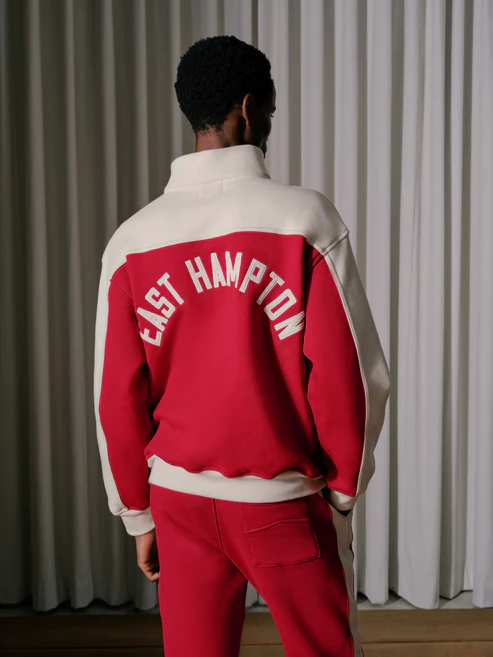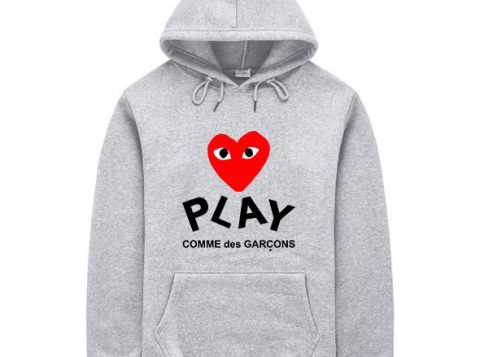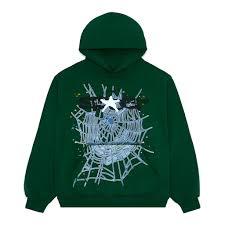
Deconstruction and Discipline: The
In the landscape of global fashion, few names hold as much conceptual power as Comme des Garçons. Founded by Rei Kawakubo in Tokyo in 1969, the label has transcended the traditional boundaries of clothing design to become a philosophical force within the industry. Germany, with its rich tradition of craftsmanship, precision, and disciplined artistry, offers an intriguing setting for Kawakubo’s aesthetic of deconstruction. The intersection between Comme des Garçons’ avant-garde rebellion and the German couture spirit has generated a distinct cultural synergy that reshapes the meaning of luxury, identity, and design.
The Language of Deconstruction in Fashion
Deconstruction, as introduced by Comme des Garçons, is not merely a design technique—it is a way of thinking. Kawakubo dismantled fashion conventions by tearing apart garments, exposing seams, playing with asymmetry, and distorting silhouettes. This act of destruction was, paradoxically, a form of creation. It challenged the consumer to question beauty, form, and perfection. When this philosophy met the German fashion world—known for its structure, technical excellence, and minimalism—it sparked an unexpected dialogue between chaos and order.
German designers have long valued control and precision, often taking inspiration from Bauhaus principles, where function and form align in perfect harmony. The influence of Comme des Garçons disrupted this tradition by introducing deliberate imperfection. It encouraged German designers to see flaws not as failures but as expressions of authenticity. The tension between deconstruction and discipline became a new form of modern luxury—one that values thought over embellishment.
The Meeting Point of Philosophy and Craft
In Germany, couture has historically been rooted in craftsmanship and technical mastery. Tailoring, fabric manipulation, and structure define its essence. Yet, Comme des Garçons’ arrival on the global stage in the 1980s brought a philosophical layer to this artistry. Kawakubo’s work demanded intellectual engagement. Her garments could not simply be worn; they needed to be interpreted.
This sensibility found fertile ground among German fashion schools and avant-garde designers. The notion of clothing as conceptual art resonated with Germany’s academic and artistic circles. Fashion institutions such as the Berlin University of the Arts began embracing design philosophies that emphasized process over product. The result was a generation of German designers who viewed fashion not as a tool of decoration but as a language of ideas. Kawakubo’s influence transformed German couture from a craft into a dialogue—between tradition and rebellion, precision and experimentation.
Minimalism Meets Anti-Fashion
German fashion has always been synonymous with minimalism—clean lines, functional design, and muted palettes. Comme des Garçons’ aesthetic, though seemingly chaotic, shares this minimalist spirit at its core. Both approaches reject unnecessary ornamentation. Yet, Kawakubo’s minimalism is not about simplicity but about reduction to essence. By stripping garments of their expected beauty, she reveals raw emotion and structure.
This conceptual minimalism has found echoes in the work of contemporary German labels such as Lemaire’s Berlin-based collaborators and experimental ateliers that explore absence rather than presence. The anti-fashion sentiment championed by Comme des Garçons aligns seamlessly with the German preference for intellectual subtlety over ostentatious display. What emerges is a shared ethos: a pursuit of purity through experimentation.
The Avant-Garde Movement in Berlin
Berlin has become a central hub for avant-garde fashion, and Comme des Garçons’ influence is unmistakable in its creative scene. The city’s underground culture, defined by its punk roots and artistic freedom, mirrors the brand’s defiant spirit. Comme des Garçons’ deconstructionist ideology fits naturally into Berlin’s cultural landscape, where fashion is not just an industry but a form of expression.
Independent German designers began incorporating Kawakubo’s techniques—raw hems, unfinished edges, and sculptural forms—into their collections. These elements reflect not imitation but adaptation, reimagining deconstruction through the lens of German discipline. Berlin Fashion Week, once dominated by functional and commercial aesthetics, now features collections that embrace asymmetry, gender fluidity, and conceptual design—all trademarks of the Comme des Garçons philosophy. The German runway, once rigid and conventional, has become a space for experimentation and identity politics.
Gender, Identity, and Conceptual Expression
Comme des Garçons has consistently blurred the boundaries of gender, crafting collections that challenge societal expectations of masculinity and femininity. This approach has resonated deeply with German couture, particularly in a country that values individuality and progressive thought. The fusion of deconstruction and discipline has enabled German designers to push further into gender-neutral and conceptual territories.
In Germany, where fashion often intersects with social critique, Kawakubo’s influence empowers designers to engage with identity as a fluid construct. Garments are no longer defined by gendered cuts but by emotional and intellectual resonance. The German interpretation of this philosophy merges the technical mastery of tailoring with the abstract freedom of Comme des Garçons, resulting in fashion that feels both cerebral and deeply human.
The Emotional Geometry of Design
One of the most compelling aspects of Comme des Garçons’ work is its emotional precision—what might appear chaotic is, in fact, meticulously constructed. This parallels the German obsession with structure. Kawakubo’s garments, though deconstructed, maintain a strong architectural foundation, echoing the geometry of German design traditions. The discipline underlying her experimentation appeals to German sensibilities that admire order, logic, and craftsmanship.
The “emotional geometry” of Comme des Garçons—the way emotion is embedded in form—has encouraged German designers to find poetry in precision. It’s a lesson in balance: discipline does not kill creativity; it gives it structure. The German couture landscape, influenced by this duality, now embraces garments that are both mathematically precise and emotionally evocative.
The Continuing Legacy
The Comme des Garçons effect on German couture is not a fleeting trend but a lasting shift in mindset. It has expanded the definition of what couture can be—less about opulence, more about meaning. German designers, inspired by Kawakubo’s defiance, have begun to see fashion as an evolving discourse rather than a static art form. The cross-pollination between Japanese avant-garde deconstruction and German structural discipline has birthed a new aesthetic language: one that values imperfection as beauty and intellect as luxury.
In this evolving landscape, Germany’s couture scene stands as a bridge between philosophy and fabric, concept and craft. Comme des Garçons has not replaced German traditions but refined them, challenging designers to think beyond the garment—to explore the invisible narratives stitched within.
Conclusion
Deconstruction and discipline, once perceived as opposites, now coexist harmoniously within German couture, thanks to the enduring influence of Comme des Garçons. Rei Kawakubo’s vision transformed destruction into creation, imperfection into art, and rebellion into form. Germany, with its heritage of precision and intellectual design, found in her philosophy a mirror for its own evolving identity. Together, they continue to redefine the boundaries of fashion—not as luxury for the few, but as a profound expression of thought, emotion, and humanity.
In the end, the Comme des Garçons effect on German couture is not just about style—it is about seeing beauty in contradiction, finding freedom in restraint, and understanding that true design begins where convention ends.





























